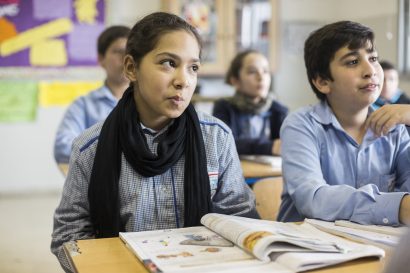 Violence, Conflict and Emergencies
Violence, Conflict and Emergencies
Modern day conflict presents a unique challenge to the disaster response and humanitarian community. Different to many disasters, conflict manifests itself over a protracted period, with varying levels of severity and no clear beginning or end. Increasingly children are the victims of such conflict, with their basic rights threatened. Education systems are increasingly vulnerable to… Read more
Some of the most egregious violations of the right to education around the world occur in contexts of emergency and protracted crises. With tens of millions affected, and nearly one third of those out of school in crisis affected countries, neglecting the education of these children and youth denies not only their future, but also… Read more
This literature review provides insights into youth agency and the dynamics of conflict and peace in conflict‐affected contexts. In particular it focuses on how educational interventions may contribute to enhancing the agency of youth as peacebuilders. In its key findings, the review highlights the need for: comprehensive understandings of youth agency for peacebuilding which will… Read more
The certification of the learning attainments of refugee and internally displaced pupils is critical because of its benefits to individuals, families, communities and societies in or recovering from crisis. However, there is very little formal research or documentation that is available on the topic. This report presents a comprehensive conceptual, policy and programming framework, complemented… Read more
Internally displaced children have the same right to education as other children; this right cannot be suspended even in emergencies. Yet in reality, many internally displaced children struggle to go to school. Even when they do have access to education, they are often taught apart from local students, for example in separate schools or at… Read more
The good practices contained within these Guidance Notes are designed to help governments, non-governmental organisations and other education stakeholders plan and implement high quality education programmes. Too often in the wake of mass violence, inter-group conflicts, or natural disasters, education, and in particular quality, relevant education, is neglected and not integrated into a holistic humanitarian… Read more
Attacks by Boko Haram in Nigeria reportedly forced 1.5 million people to flee to other parts of the country and at least another 150,000 have taken refuge in neighbouring Chad, Niger and Cameroon. Government counter-insurgency operations have also contributed to insecurity and displacement, both in the north-east and in neighbouring countries. This has also impacted… Read more
In almost all armed conflicts, mass population displacements, natural disasters and other crises, a number of children become separated from their families or from other adults responsible for them. These children form one of the most vulnerable groups in these situations, often deprived of care and protection. Most can be reunited with parents, siblings, members… Read more
This issues paper is intended to inform a series of discussions convened by the Global Partnership for Education (GPE) about a potential new platform or fund to address the educational needs of children and youth affected by crisis and conflict. In it, the authors review the current architecture for funding and delivery of educational services for… Read more
Hundreds of incidents of attacks on education – including killing and injury of students and teachers, and damage to schools during fighting – were documented in Israel/Palestine in 2009-2012 by the UN. The great majority of incidents occurred in connection with the Israeli military operations ‘Cast Lead’ (27 December 2008 to 18 January 2009) and… Read more




